Implementing Resolutions 57 and 72 of the Politburo , the health sector is having many breakthrough solutions in science, technology, digital transformation applications, moving towards building paperless smart hospitals, digitizing the entire process, connecting data between medical facilities to reduce testing costs for patients, shortening medical examination and treatment time, and reducing hospital overload.
Shorten time, save hundreds of billions in testing costs
At 9:30 am, Mr. Pham Xuan Phuc ( Hanoi ) arrived at Bach Mai Hospital. He said he registered for a medical examination through the "Bach Mai Care" application and was scheduled for a digestive examination. "The application is convenient and on time, I arrived and was examined immediately, without having to wait long like before," said Mr. Phuc.
For a bone and joint examination, Ms. Nguyen Thi Hoa ( Quang Ninh ) also installed the "Bach Mai Cere" application and came for an appointment. "I brought the results of the X-ray and ultrasound from the lower level, the doctor did not ask me to take the X-ray and ultrasound again but used the X-ray report, helping me save some money," Ms. Hoa said.

The “Bach Mai Care” application acts as a digital bridge, allowing people to proactively manage their medical examination and treatment journey with just a smartphone. With this software, patients can proactively make appointments in advance, choose a specialist, choose a doctor, and choose a suitable examination time right from home, thereby minimizing waiting time and crowding at the hospital. Patients can also easily look up test results, prescriptions, and monitor the entire health examination process at Bach Mai Hospital, including proactively managing personal and family health records.
Having suffered from hepatitis B for many years leading to liver failure, Mr. Pham Quoc Duong (60 years old, Hanoi) often had to be treated at the Institute of Tropical Medicine, Bach Mai Hospital. He said that before, every time he went to the hospital, he had to wait in line for half a day because of the overload of patients. Since the hospital implemented electronic medical records, the process of registering for medical examination and treatment has been shortened a lot, and was completed in just one morning. "100% of the hospital's data records have been digitized, so you only need a smartphone to go to the hospital. All results and treatment processes are sent to the phone," said Mr. Duong.
Bach Mai is the first special-class hospital of the Ministry of Health to deploy full electronic medical records from November 1, 2024 and is the first paperless, fully digitized smart hospital in Vietnam. After nearly 1 year of implementation, electronic medical records have brought multi-dimensional benefits to both patients and hospitals, helping to reduce paperwork and improve treatment efficiency.
Sharing about this, Associate Professor, Dr. Dao Xuan Co, Director of Bach Mai Hospital, said that in the past, people from remote areas of Nghe An, Ha Tinh, Ha Giang, Tuyen Quang had to eat and wait, even had to lie under the hospital stairs to wait their turn to be examined and have X-rays, but now it has changed, patients coming to Bach Mai Hospital will be examined the same day. At 6am every day, the hospital opens to receive patients; at 2pm, all patients have X-ray results, tests, and prescriptions, and at 3pm, patients can return home.
“Thus, with the technological solution, medical examination and treatment only takes place within 1 day. People are very excited because it saves a lot of costs and time,” shared the Director of Bach Mai Hospital.
Previously, every year, Bach Mai Hospital had to print millions of X-ray films, MRI films, millions of test results, and millions of sets of paper medical records, which was extremely troublesome and costly. Now, thanks to digital transformation, the hospital does not need to print films or test results, so every year the hospital has saved about 100 billion VND.
For clinicians and nurses, electronic medical records bring many benefits. “Before, we had to find a test, it was very difficult, we had to go through the medical records over and over again, when it came to summarizing the medical records, we had to sign many signatures, I was the last person to sign the records for the patient to leave the hospital, many times the records were piled up, we had to turn each page to sign. If we went to a consultation, the nurses each carried a stack of medical records to the consultation, it was difficult to manage, and easy to lose. Not to mention, paper medical records are very contagious, spreading bacteria and viruses. The hospital implemented electronic medical records, we are very free, we can go anywhere without people, we do not need to carry a very large film and a stack of medical records but still grasp the patient's condition. We just need to "press a button" and we know the patient's medical history", Associate Professor, Dr. Do Duy Cuong, Director of the Institute of Tropical Medicine, Bach Mai Hospital said.
One of the hospitals that is always overloaded with patients is Hanoi Oncology Hospital. Previously, patients had to wait in line for a long time to get an X-ray. Since the digital transformation, the time to register for an examination has been reduced to just a few dozen seconds. “Before, I sometimes had to stay in the hospital for 2 days to get an examination, X-ray, and test. Now, I can make an appointment and have the results by noon, or at most, early afternoon, and I can take a bus home,” said Ms. Nguyen Thi Ly, who is being treated for lung cancer.
The implementation of electronic medical records helps the results to be connected and shared. Data from the district level, if meeting the standards, will also be accepted by the higher level. Thanks to that, patients do not need to spend millions, even tens of millions of dong on re-imaging when going to the higher level. Up to now, although not yet deployed in all hospitals across the country, many central hospitals and grade I hospitals have used test and imaging results from other hospitals.
According to Dr. Nguyen Cong Huu, Director of Hospital E, the hospital has used all results from other hospitals when patients come for examination, without requiring patients to redo them, except for results that have expired clinically. Even CT scan results from provincial hospitals are accepted.
At Bach Mai Hospital, many patients are transferred from other central hospitals and provincial hospitals. When they go, they bring their test and imaging results with them, which the hospital also uses and does not require the patients to redo. According to Associate Professor, Dr. Dao Xuan Co, unless these results are out of clinical validity or require more in-depth tests and imaging, the patients will have to do them. This is the goal of connecting digital health transformation, using and sharing data between medical facilities. This helps save a lot of costs for patients, especially when hospitals support each other professionally, patients benefit from both expertise and cost reduction.
According to the Ministry of Health's estimates, if only 1% of the number of tests can be reduced, each year, the number of tests that do not need to be performed at hospitals alone will be about 4.75 million. On average, each test costs 50,000 VND, so hospitals recognizing each other's test results will help save more than 237 billion VND. To date, the health sector has connected 34 health departments and 34 social insurance agencies. More than 99.7% of medical examination and treatment facilities in 34 provinces and cities nationwide have connected with the appraisal system of Vietnam Social Insurance.
AI application to cure serious diseases
Digital transformation not only helps reduce administrative procedures, but is also applied in early detection and treatment of serious diseases. Typically, the health sector has applied artificial intelligence (AI) to diagnose and detect many difficult diseases. "With early cancer in the digestive tract, thanks to AI, we can immediately detect cancer in the mucosal layer, at that time the treatment is just to cut and separate the mucosa, the patient will be completely cured, without having to undergo chemotherapy as before", Associate Professor, Dr. Dao Xuan Co said.
Associate Professor, Dr. Vu Van Giap, Deputy Director of Bach Mai Hospital, shared that Bach Mai Hospital is leading a state-level project, with members from the University of Technology (Hanoi National University), K Hospital, Hanoi Medical University Hospital, applying the model of "machine learning", "deep learning" with AI to help detect lung cancer at a very early stage.
“We relied on data from thousands of cancer patients in Vietnam and we had initial success. Our research team remembers a young patient, 48 years old, with a very small lung nodule. The doctor had to face two decisions, choosing the solution of continuing to monitor the nodule, the patient would face the risk of increased damage, invasion and metastasis, or the solution of performing intervention from the beginning.
And when we pushed the data to the AI system that we built, the AI predicted that the risk of malignancy from that nevus was over 90%. So we consulted and decided to completely remove that lesion, even though the lesion was very small, it was a malignant lesion. With the help of AI, we made the correct decision to operate at an early stage.
Currently, the patient is almost completely cured, without chemicals or chemotherapy, only needs to be monitored and periodically re-examined. This is a very important achievement of technology and AI, helping doctors make accurate decisions, increase work efficiency, and not miss any injuries," Associate Professor Vu Van Giap said.
Not only stopping at applying AI to detect early lung cancer, but also with many other diseases such as breast cancer; support reading X-ray, CT, MRI films. With 100% of patient medical records at Bach Mai Hospital digitized and electronicized, this huge data warehouse will continuously be used to train AI tools. The larger the data, the smarter and more accurate the AI tools will be, thereby creating a competitive advantage in diagnosis and treatment.
Source: https://cand.com.vn/y-te/bai-1-benh-vien-thong-minh-khong-giay-to-so-hoa-toan-trinh-i787872/






![[Photo] Deep sea sand deposits, ancient wooden ship An Bang faces the risk of being buried again](https://vphoto.vietnam.vn/thumb/1200x675/vietnam/resource/IMAGE/2025/11/13/1763033175715_ndo_br_thuyen-1-jpg.webp)














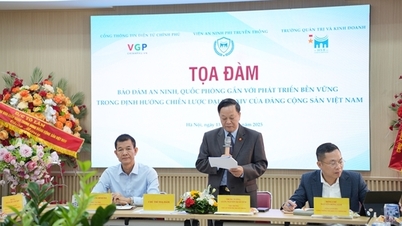




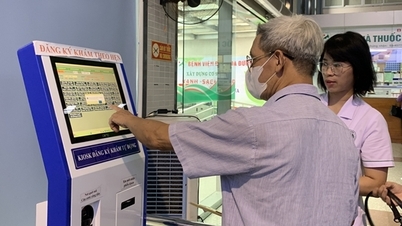












































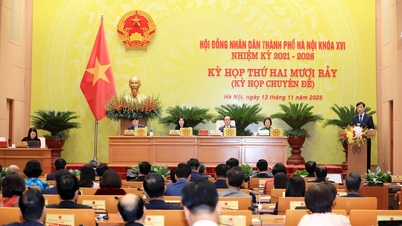







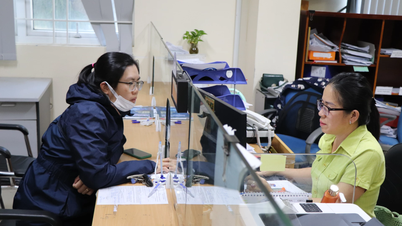

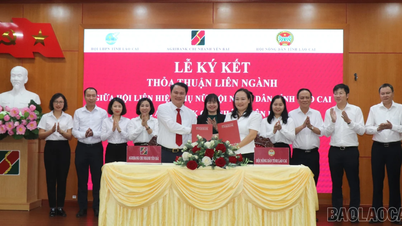









![Dong Nai OCOP transition: [Article 3] Linking tourism with OCOP product consumption](https://vphoto.vietnam.vn/thumb/402x226/vietnam/resource/IMAGE/2025/11/10/1762739199309_1324-2740-7_n-162543_981.jpeg)







Comment (0)